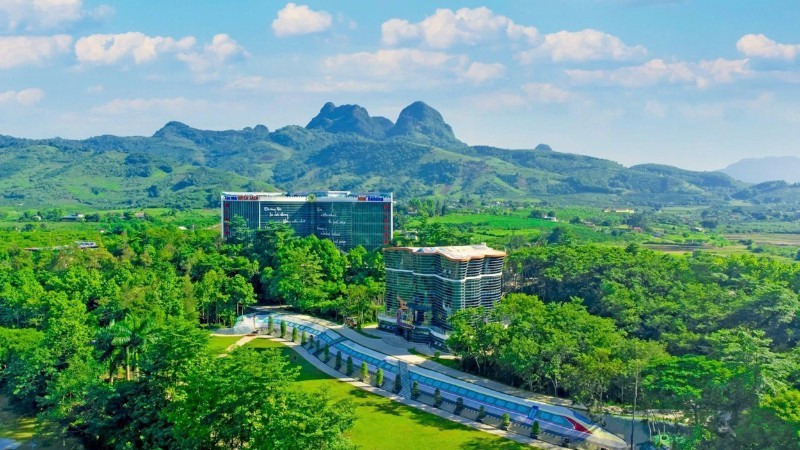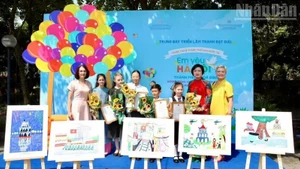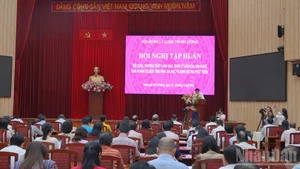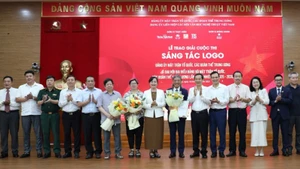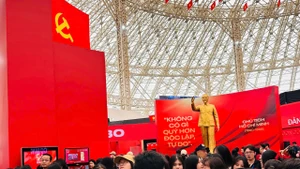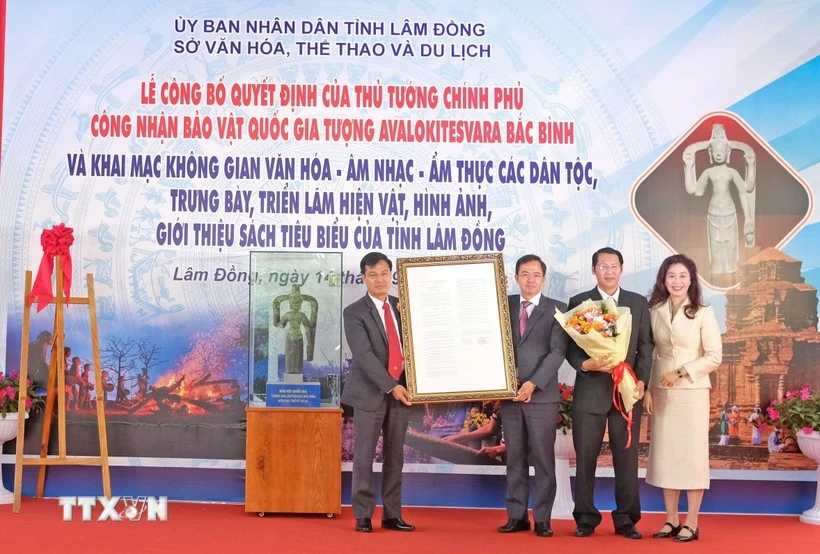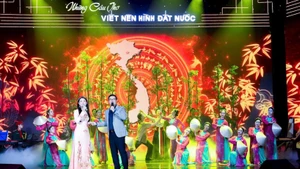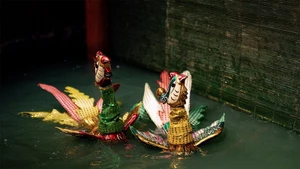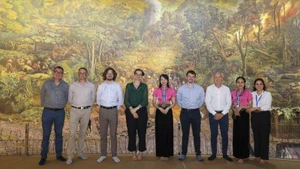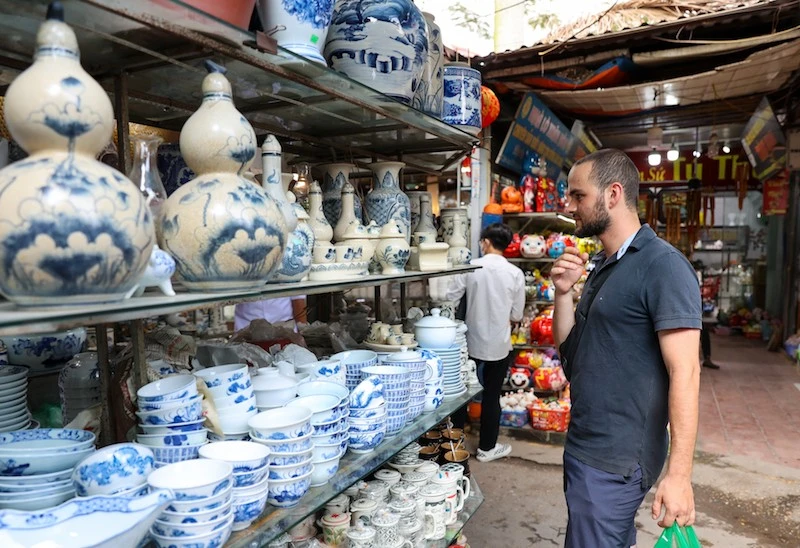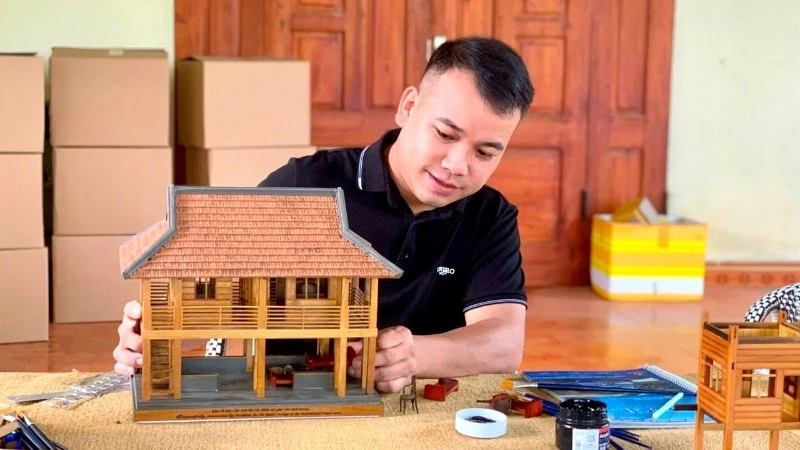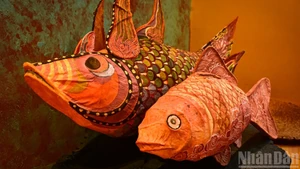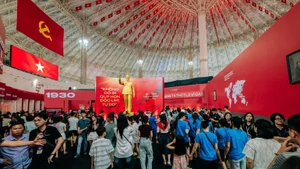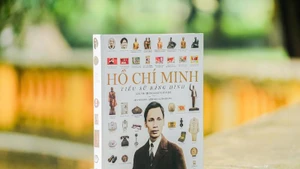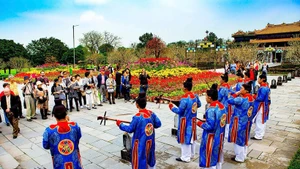Setting foot in the Heritage Park of Vietnamese Scientists (internationally known as Meddom Park), visitors can immediately feel the serenity of a poetic landscape of mountains and waters, as it resembles both an ecological park and a special museum. Officially opened to visitors in 2016 with an initial area of 2.7 hectares, the park has now expanded to more than 34 hectares, with a diverse and aesthetic architectural complex.
According to Assoc. Prof. Dr. Do Van Tru, Chairman of the Viet Nam Cultural Heritage Association, the establishment of the park is an important milestone in researching, preserving and promoting the tangible and intangible heritage values of Vietnamese scientists. At the same time, it has become a tourist destination associated with education and experience.
Dr. Tran Bich Hanh, Deputy Director of the Heritage Museum of Vietnamese Scientists, said that it is estimated that the park welcomes tens of thousands of domestic and foreign visitors each year, including a large number of pupils and students, contributing to spreading a love of science and inspiring learning and national development.
The Heritage Park of Vietnamese Scientists was established from the aspiration of Professor, Doctor, Labour Hero Nguyen Anh Tri, former Director of the National Institute of Haematology and Blood Transfusion, and the founder of the Heritage Centre of Vietnamese Scientists.
Since 2008, the centre has collected nearly one million valuable documents and artefacts. The lives and careers of major figures of Vietnamese science such as Professors Ton That Tung, Ho Dac Di, Tu Giay and Bui Dai; as well as Professors who laid the foundation for military engineering such as Tran Dai Nghia and Ta Quang Buu, and agricultural scientists such as Luong Dinh Cua, Bui Huy Dap, and Vu Tuyen Hoang are vividly depicted here.
Each exhibited item carries its own story, from an old camera, a notebook, a map, a microscope, or a simple pen, all linked to the scientists’ journeys of research, teaching and dedication. Thematic displays such as “Thirst for learning and creativity”, “Deep in each memento”, “Stories of geology” and “Science: creativity and dedication” have affirmed the special value of this cultural institution.
Many visitors are moved when seeing first-hand a manuscript yellowed with time, a rusty typewriter, or when listening to stories of arduous but successful research journeys, friendships, love, and teacher-student relationships associated with scientific life.
Since 2008, the centre has collected nearly one million valuable documents and artefacts. The lives and careers of major figures of Vietnamese science such as Professors Ton That Tung, Ho Dac Di, Tu Giay and Bui Dai; as well as Professors who laid the foundation for military engineering such as Tran Dai Nghia and Ta Quang Buu, and agricultural scientists such as Luong Dinh Cua, Bui Huy Dap, and Vu Tuyen Hoang are vividly depicted here.
With its spacious campus and diverse experiences, the park is not only a vast repository but also offers visitors an interesting journey of discovery. Its architecture is very creative and symbolic, especially the “Book Building” – designed in the shape of an open book, symbolising an endless treasury of knowledge.
The five floors of the building feature the history of Vietnamese science, rare artefacts, and workspaces recreating the rooms of famous scientists. Notably, the fifth floor serves as an interactive space where visitors can participate in scientific interactive activities.
The park’s natural space is diverse and romantic, with the Lake of Love, Quy Thuy Stream, pine forests, and a botanical garden with over 500 plant species, including 200 precious wood species. Visitors can raft, fish, join bamboo pole dances, or explore stilt houses of Muong ethnic minority. From October to December, they can also visit and enjoy Cao Phong orange orchards, a local specialty fruit.
“Everyone is surprised when they arrive, saying such a place deserves to be widely known. The buildings shaped like butterfly wings, beetle shells, and peacocks feel both artistic and familiar,” said Ta Thanh Huyen, a visitor from Ha Noi.
Many international visitors have highly appreciated the unique idea of the park, a cultural–scientific complex that places intellectual heritage in an open space, closely linked to nature and community life.
On the occasion of the 80th anniversary of the National Day, the park has opened the exhibition “Contributions of Vietnamese scientists to the cause of national construction and defence”. The exhibition, planned to last five years and updated regularly, aims to help the public visualise the 80-year journey of contribution by Vietnamese intellectuals from the resistance war period until independence and current socio-economic dvelopment.
The values combining nature with intellect, science with culture, have created the distinctive charm of the Heritage Park of Vietnamese Scientists. It is not only a place honouring scientific heritage and the memory of talented scientists but also a potential destination, contributing to enriching the tourism map of Phu Tho and the northern midland and mountainous region.
